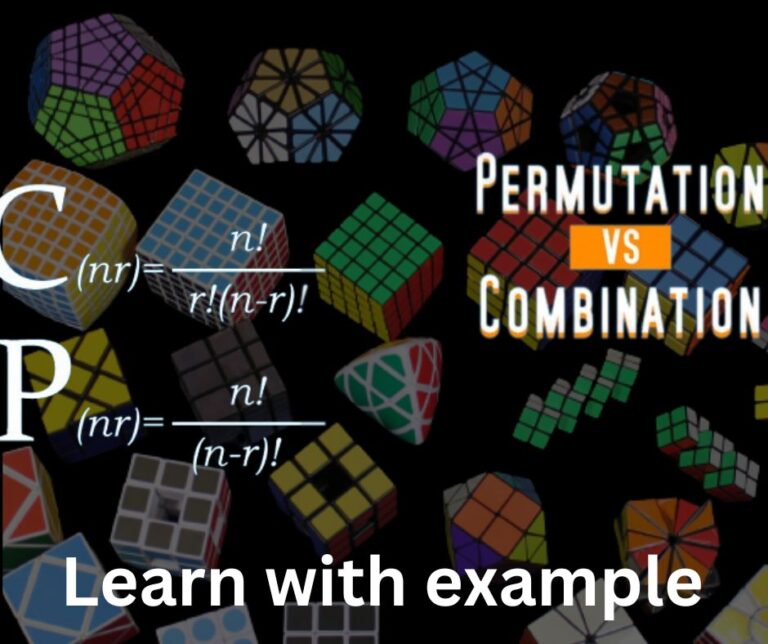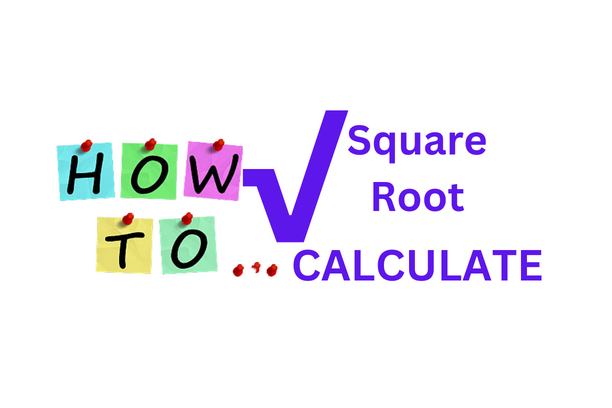Definition of Empirical probability
Empirical probability is a measure of the likelihood of an event based on observed data or past experience. It is calculated by counting the number of times an event occurs in a sample and dividing by the total number of observations in the sample. This is in contrast to theoretical probability, which is calculated using mathematical formulas or assumptions about the underlying distribution of the data. Empirical probability can be useful for approximating the true probability of an event, but it can also be subject to bias or inaccuracies if the sample is not representative of the population.
Empirical probability examples in real life
There are many examples of empirical probability in real life. Here are a few examples:
- Weather forecasting: Meteorologists use data from past weather patterns and current weather conditions to make predictions about future weather. They use this data to calculate the probability of certain weather events, such as the likelihood of precipitation or the chance of a heatwave.
- Medical research: Clinical trials use sample groups of patients to test the effectiveness of new treatments. Researchers use data from these trials to calculate the probability of a successful outcome for a specific treatment.
- Sports betting: Bookmakers use data on past performances of teams and players to calculate the probability of a team or player winning a game or tournament. They use this information to set odds for betting on the outcome of the event.
- Stock market: Traders use historical data on stock prices and market trends to make predictions about future stock performance. They use this data to calculate the probability of a stock increasing or decreasing in value.
- Quality control: Manufacturers use data on past product defects to calculate the probability of a defect occurring in future production runs. They use this information to identify areas where they need to improve quality control.
- Risk Management: Insurance companies use data on past claims to calculate the probability of future claims. They use this information to set premiums for different types of insurance policies.
It is important to note that in all of these examples, the probability calculated is based on historical data and may not necessarily be representative of future events.
Empirical Probability Formula
The formula for empirical probability is:
Empirical Probability = (Number of favorable outcomes) / (Total number of outcomes)
For example, if you flipped a coin 10 times and it landed on heads 6 times, the empirical probability of getting heads in a coin flip would be:
Empirical Probability = (6) / (10) = 0.6 or 60%.
It is important to note that empirical probability is a measure of past or observed data and it may not always be representative of the true probability of an event. However, with a large sample size, the empirical probability may be a good approximation of the true probability.
Empirical probability calculator
Probability Definition in Math
Empirical vs Classical probability
Empirical probability and classical probability are two different ways of calculating probability.
Classical probability is a method of calculating probability based on the concept of equally likely outcomes. It is used when the sample space is well-defined and all outcomes are equally likely to occur. For example, when rolling a fair die, the probability of rolling a 6 is 1/6, because there are six equally likely outcomes (1, 2, 3, 4, 5, 6) and one of them is 6.
Empirical probability, on the other hand, is a method of calculating probability based on observed data or past events. It is used when the sample space is not well-defined or when the outcomes are not equally likely. For example, if you flip a coin 100 times and it comes up heads 60 times, the empirical probability of getting heads on the next flip is 0.6 or 60%.
In summary, classical probability is based on theoretical assumptions, while empirical probability is based on observed data. Classical probability is useful in situations where the sample space is well-defined and the outcomes are equally likely, such as rolling a fair die. Empirical probability is useful in situations where the sample space is not well-defined or the outcomes are not equally likely, such as flipping a coin with an unknown bias.
Solved Example on Empirical Probability
Here’s a solved example of how to calculate empirical probability:
Imagine you are conducting a survey to find out what color car is most popular among a group of 100 people. You ask each person what color car they drive and record the information. Here are the results:
- 40 people drive red cars
- 30 people drive blue cars
- 20 people drive green cars
- 10 people drive black cars
To find the empirical probability of a person driving a red car, you would use the following formula:
Empirical Probability = (Number of favorable outcomes) / (Total number of outcomes)
Empirical Probability = (40) / (100) = 0.4 or 40%
So, the empirical probability of a person driving a red car in this sample is 40%.
Similarly, you can find the empirical probability of a person driving a blue car:
Empirical Probability = (30) / (100) = 0.3 or 30%
Empirical Probability of driving a green car: Empirical Probability = (20) / (100) = 0.2 or 20%
Empirical Probability of driving a black car: Empirical Probability = (10) / (100) = 0.1 or 10%
It is important to note that these probabilities are based on the sample of 100 people surveyed, and may not necessarily be representative of the population as a whole.
Empirical probability examples with solutions
Here are a couple of examples of how to calculate empirical probability:
Example 1: You roll a die 100 times and record the results. The die lands on a 4 25 times. What is the empirical probability of rolling a 4?
Solution: Empirical Probability = (Number of favorable outcomes) / (Total number of outcomes) Empirical Probability = (25) / (100) = 0.25 or 25%
Example 2: You flip a coin 1000 times and record the results. The coin lands on heads 560 times. What is the empirical probability of getting heads?
Solution: Empirical Probability = (Number of favorable outcomes) / (Total number of outcomes) Empirical Probability = (560) / (1000) = 0.56 or 56%
Example 3: A die is rolled 100 times and the number 6 comes up 20 times. What is the empirical probability of rolling a 6?
Solution: Empirical Probability = (Number of favorable outcomes) / (Total number of outcomes) Empirical Probability = (20) / (100) = 0.2 or 20%
Example 4: A bag contains 5 red marbles, 8 blue marbles, and 2 green marbles. If a marble is drawn at random from the bag, what is the empirical probability of drawing a blue marble?
Solution: Empirical Probability = (Number of favorable outcomes) / (Total number of outcomes) Empirical Probability = (8) / (15) = 0.533 or 53.3%
Example 5: A survey of 100 people shows that 60 of them are left-handed. What is the empirical probability of a person being left-handed in this sample?
Solution: Empirical Probability = (Number of favorable outcomes) / (Total number of outcomes) Empirical Probability = (60) / (100) = 0.6 or 60%
In all examples, it is clear that as the sample size increases, the empirical probability is a good approximation of the true probability.
It’s worth noting that Empirical probability is a way of approximating the true probability of an event and it can be subject to bias or inaccuracies if the sample is not representative of the population.
Empirical probability question for class 11
Here is an example of an empirical probability question that could be appropriate for a class 11 level mathematics course:
A study is conducted to determine the proportion of people who own a smartphone in a certain city. A random sample of 1000 people is surveyed and it is found that 600 of them own a smartphone.
- What is the empirical probability that a person chosen at random from this city owns a smartphone?
- What is the margin of error of this estimate?
- At a 95% confidence level, what is the interval in which the true proportion of smartphone owners in the city is likely to lie?
- The empirical probability that a person chosen at random from this city owns a smartphone is 600/1000 = 0.6 or 60%.
- A margin of error is a measure of how accurate an estimate is. It is calculated as (z-score * standard error of the proportion) . A common choice for the z-score is 1.96 for a 95% confidence level. The standard error of the proportion is (pq/n)^1/2 where p is the proportion of favorable outcomes, q is the proportion of unfavorable outcomes and n is the sample size . In this case, the margin of error is (1.96 * √(0.6*0.4/1000)) = 0.04
- A 95% confidence interval is a range of values that is likely to contain the true population proportion with a 95% level of confidence. It is calculated by adding and subtracting the margin of error to the sample proportion. In this case, the interval would be (0.6 – 0.04, 0.6 + 0.04) = (0.56, 0.64)
In conclusion, the empirical probability of a person chosen at random from this city owning a smartphone is 60% with a margin of error of 4% and a 95% confidence level, the true proportion of smartphone owners in the city is likely to be between 56% and 64%.
Empirical probability question for class 12
Here is an example of an empirical probability question that could be appropriate for a class 12 level mathematics course:
A study is conducted to determine the proportion of students who pass an exam in a certain school. A random sample of 200 students from the school is selected and it is found that 130 of them pass the exam.
- What is the empirical probability that a student chosen at random from this school passes the exam?
- What is the standard deviation of this estimate?
- At a 99% confidence level, what is the interval in which the true proportion of students passing the exam in the school is likely to lie?
- The empirical probability that a student chosen at random from this school passes the exam is 130/200 = 0.65 or 65%.
- The standard deviation of this estimate is calculated by using the formula √(pq/n) where p is the proportion of favorable outcomes, q is the proportion of unfavorable outcomes and n is the sample size. In this case, the standard deviation of this estimate is √(0.65*0.35/200) = 0.055
- A 99% confidence interval is a range of values that is likely to contain the true population proportion with a 99% level of confidence. It can be calculated by using the formula p ± z*(standard deviation of the estimate) where z is the critical value for the given level of confidence. For a 99% confidence level, the critical value is 2.576. Therefore, the interval would be (0.65 – 2.5760.055, 0.65 + 2.5760.055) = (0.567, 0.733)
In conclusion, the empirical probability of a student chosen at random from this school passing the exam is 65% with a standard deviation of 0.055, and a 99% confidence level, the true proportion of students passing the exam in the school is likely to be between 56.7% and 73.3%.
Frequently Asked Questions on Empirical Probability
- What is empirical probability? Empirical probability is a method of estimating the probability of an event based on the relative frequency of that event in a sample of observations or trials.
- How is empirical probability calculated? Empirical probability is calculated by dividing the number of times an event occurred by the total number of trials or observations. For example, if an event occurred 8 times out of 20 trials, the empirical probability of the event would be 8/20 or 0.4.
- How does empirical probability differ from theoretical probability? Theoretical probability is based on mathematical calculations and models, whereas empirical probability is based on data from observed events or trials. Theoretical probability is often determined using mathematical formulas, whereas empirical probability is determined by counting the number of times an event occurs in a sample of data.
- How does sample size affect empirical probability? As the sample size increases, the empirical probability becomes a better estimate of the true probability of the event. A larger sample size allows for more observations and trials, which can lead to a more accurate estimate of probability.
- What is the relationship between empirical probability and the law of large numbers? The law of large numbers states that as the number of trials or observations increases, the empirical probability of an event will converge towards the true probability of the event. This means that as the sample size increases, the empirical probability will become a better estimate of the true probability.



